#wildlife: iowa
Text

A red-tailed hawk (Buteo jamaicensis) defends its meal in Howard County, Iowa, USA
by Larry Reis
#red tailed hawk#hawks#raptors#birds#buteo jamaicensis#buteo#accipitridae#accipitriformes#aves#chordata#wildlife: iowa#wildlife: usa#wildlife: north america
3K notes
·
View notes
Text

You weak-willed kids and your summers! Back in my day, we had nothing but glaciers and we walked crawled on our bare foot!
Iowa Pleistocene Snail (Discus macclintocki)
Iowa, Illinois, and Wisconsin, USA
Status: Endangered
Threats: climate change, habitat loss
#snail#mollusc#gastropod#creature art#wildlife#artists on tumblr#north america#usa#iowa#illinois#wisconsin
8 notes
·
View notes
Text
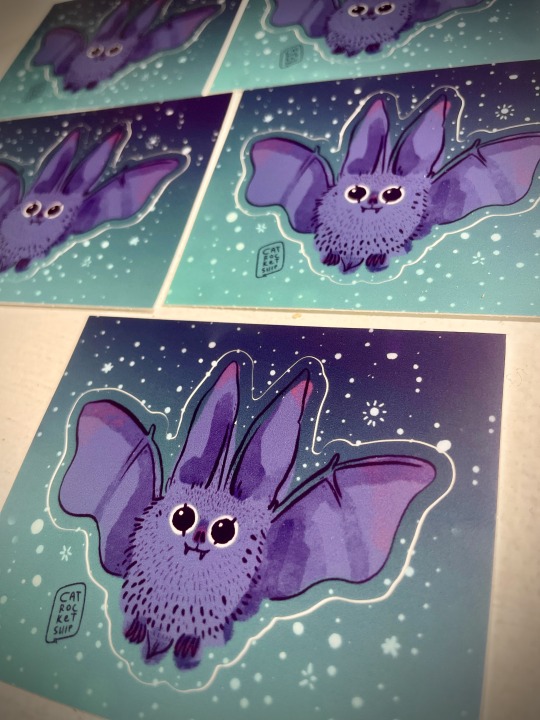
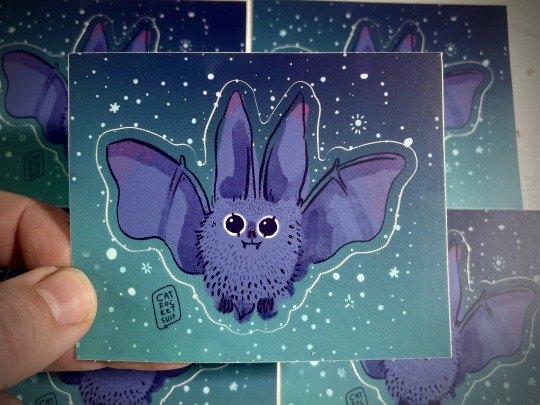

little batty sticker (etsy)
I drew this thinking of the little brown bat, a mouse-eared microbial found in North America and now listed as endangered due to white-nose syndrome spreading through their populations
#bats#cute bats#illustration#drawing#art#artists on tumblr#my art#little brown bat#nature#wildlife#wild animals#iowa
10 notes
·
View notes
Text

#nature#outdoors#my photography#nature photography#my art#beautiful photos#my photos#outdoor photography#photo#animal photography#animals#wildlifephotography#wildlife#wild life photography#bald eagle#wild animals#iowa#photographers of tumblr#photographers on tumblr
6 notes
·
View notes
Text
Rich was on fire when he was pretending to be Don Wilson, owner of Iowa's largest wildlife preserve.




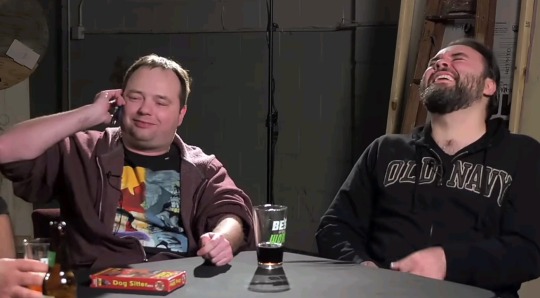





#red letter media#my favourite best of the worst moment#best of the worst#don wilson#owner of iowas largest wildlife preserve#rich evans#mike stoklasa#jay bauman#freddie williams#botw#all those faces are so precious#they are descening into the madness#siginari original
4 notes
·
View notes
Text


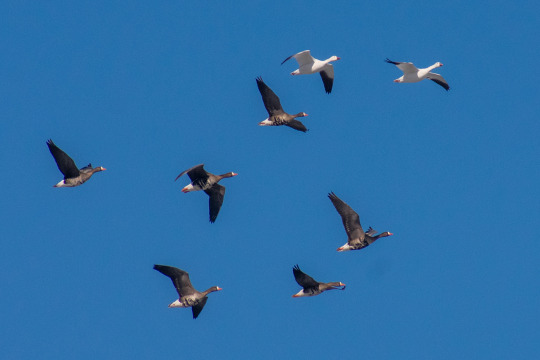
in flight, Jey Schroeder, Desoto NWR, 2023
#wildlife#wildlife photography#bird photography#bald eagle#geese#canadian geese#white fronted geese#snow geese#americana#waterfowl#birds#bird watching#desoto nwr#nebraska#iowa#nebraska photographer#nature#animals#animal photography#photography#wildlife photographer
13 notes
·
View notes
Photo

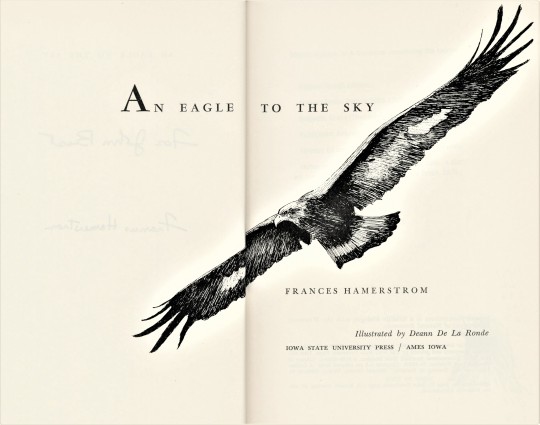

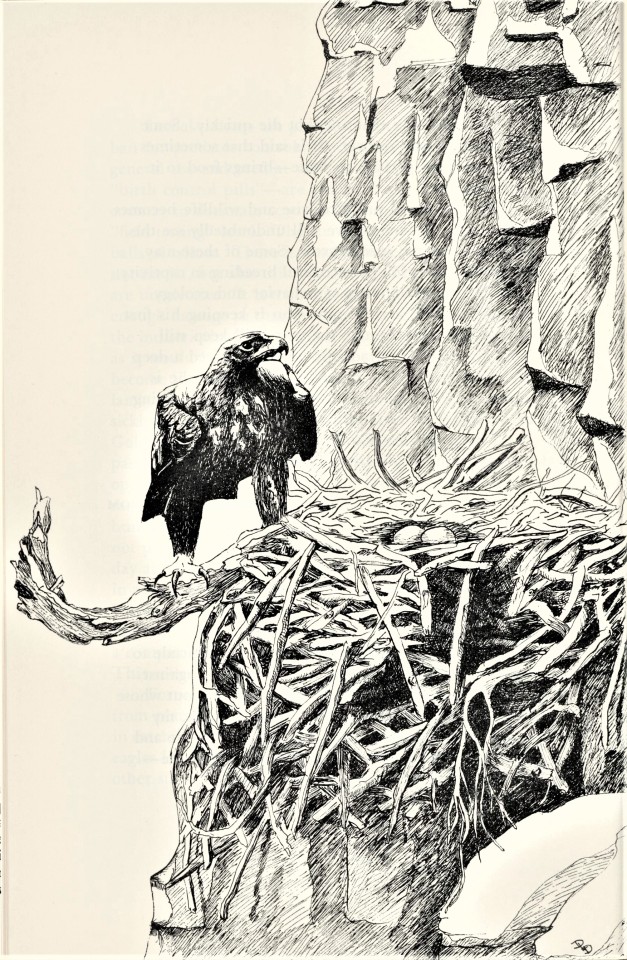

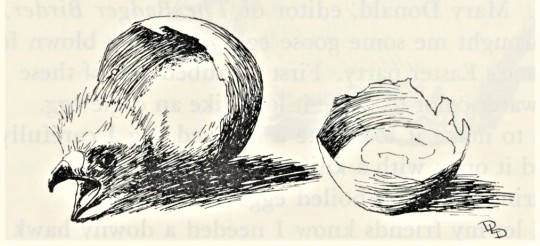




A Golden Eagle Feathursday
In the late 1960s, Wisconsin wildlife biologist Frances Hamerstom (1907-1998) began training and rehabilitating two Golden Eagles (Aquila chrysaetos), Chrys and Nancy. From her field notes, Hamerstrom composed this accessible narrative of her experience, An Eagle to the Sky, published by the Iowa State University Press in 1970. At the time, young artist Deann De La Ronde was living with Hamerstrom and her naturalist husband Fred Hamerstrom to observe their activities and the wildlife they worked with, and provided these pen and ink drawings for the publication. De La Ronde has since established herself as a professional wildlife artist. The jacket painting of Frances Hamerstrom with Nancy is by the noted wildlife painter Francis Golden.
Originally from Boston, Frances Hamerstrom studied with Paul Errington at Iowa State University, where she received her Bachelor of Science degree, and conducted her graduate work at the University of Wisconsin with the famous Aldo Leopold. Both Hamerstroms went to work as biologists for the Wisconsin Department of Natural Resources, where Frances worked for 23 years. They both developed an expertise in the conservation of the endangered prairie chicken and are credited by naturalists for saving the species from expiration in Wisconsin. For their efforts, the Hamerstroms were awarded he National Wildlife Federation Award for Distinguished Service to Conservation in the same year this book was published. A prolific writer, Frances Hamerstrom was also a licensed falconer, and developed an expertise in birds of prey, publishing Birds of Prey in Wisconsin in 1972.
Our copy of An Eagle to the Sky is a donation of one of our principal benefactors John S. Best, also active in conservation issues, and this volume is a signed presentation copy to Best form the author.
View other posts on the work of Frances Hamerstrom.
View more Feathursday posts.
#Feathursday#Golden Eagles#wildlife conservation#wildlife art#Frances Hamerstrom#An Eagle to the Sky#Deann De La Ronde#Francis Golden#Iowa State University Press#John S. Best#birds#birbs!
26 notes
·
View notes
Text
More Than Just Corn
More Than Just Corn
By S. J. Brown
Have you ever been to Iowa? I have. They have corn palaces, corn markets, corn mazes, a corn song, and even a football team called the cornhuskers. But this state has so much more to offer than just corn. There are dozens of places to spot wild critters, Wildlife areas, Wildlife management areas, wildlife refuges, state forests, state preserves, and state parks. While each…

View On WordPress
0 notes
Text
Moth of the Week
Cecropia Moth
Hyalophora cecropia

The cecropia moth is a member of the family Saturniidae or the family of giant silk moths. This species was first described in 1758 by Carl Linnaeus. This moths gets its name from the mythological kind of Athens, Cecrops I.
Description The cecropia moth’s wings are brown or black with crescent spots which are white in the center and then fade to red then black. They are larger on the hindwings. All the wings also have a white stripe followed by a red one and then frilled white patterns and white and grey edges. The forewings have a black eyespt on the upper corners. The moth’s head and back are red with a white band and dark antennae. The body is hairy with red legs, a white upper body, and an alternating red and white abdomen.
Average wingspan: 15.24 cm (6 in)
Diet and Habitat Caterpillars eat trees and shrubs such as wild cherry, plum, maple, willow, boxelder, apple, crabapple, and lilac, to name a few. Adult moths have no mouths and do not feed. These moths can be found east of the Rocky Mountains in the United States and Canada. Their range goes west to Washington and north into the majority of Canadian provinces. They prefer hardwood forests and are most commonly found on maple, cherry, and birch trees.
Mating Mating season for this moth is late May or June. The females release pheromones which the males detect with their antennae. They can detect up to a mile away but can fly up to 7 miles during their search. The mating usually begins early in the morning and lasts until the evening. These moths are univoltine, meaning they have only one generation per year.
Predators This species is parasitized by some species of wasps and flies, especially the Compsilura concinnata, who lay their eggs in or on the caterpillars. Other threats are squirrels, loss of habitat, and outdoor lights.
Fun Fact The cecropia moth is North America's largest native moth
(Source: Wikipedia; Iowa State University, Horticulture and Home Peat News; National Wildlife Federation; Prairie Haven; AZ Animals)
#animals#bugs#facts#insects#libraryofmoths#moth#mothoftheweek#lepidoptera#Hyalophora cecropia#cecropia moth#Saturniidae
93 notes
·
View notes
Text
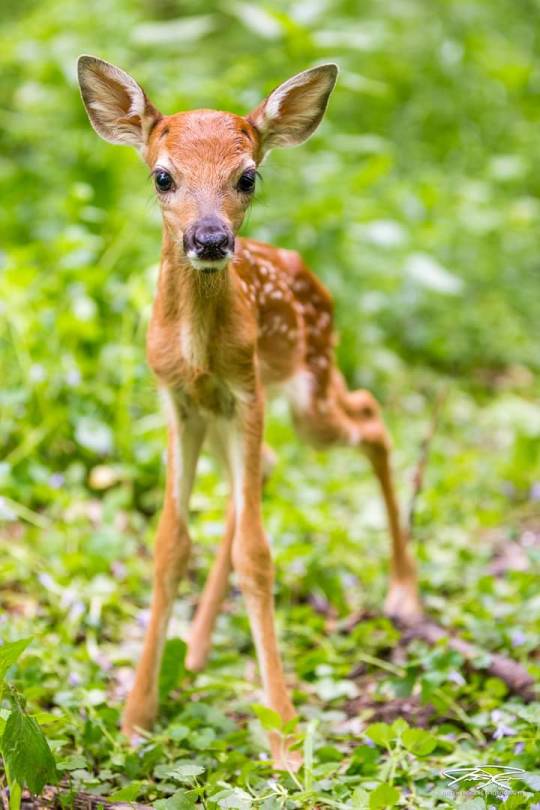
By Roger's Photography : This baby whitetail deer was entered into the 2016 Iowa State Fair photography salon. Roger recalls walking the trail looking for wildlife when this tiny fawn came stumbling out of the weeds towards me. It had to have been just born hours prior as it could barely walk! It was so naive and curious.
15 notes
·
View notes
Text
This story originally appeared in Hakai Magazine, an online publication about science and society in coastal ecosystems, and is part of the Climate Desk collaboration. It was published in collaboration with Earth Island Journal.
The floatplane bobs at the dock, its wing tips leaking fuel. I try not to take that as a sign that my trip to Chirikof Island is ill-fated. Bad weather, rough seas, geographical isolation—visiting Chirikof is forever an iffy adventure.
A remote island in the Gulf of Alaska, Chirikof is about the size of two Manhattans. It lies roughly 130 kilometers southwest of Kodiak Island, where I am waiting in the largest town, technically a city, named Kodiak. The city is a hub for fishing and hunting, and for tourists who’ve come to see one of the world’s largest land carnivores, the omnivorous brown bears that roam the archipelago. Chirikof has no bears or people, though; it has cattle.
At last count, over 2,000 cows and bulls roam Chirikof, one of many islands within a US wildlife refuge. Depending on whom you ask, the cattle are everything from unwelcome invasive megafauna to rightful heirs of a place this domesticated species has inhabited for 200 years, perhaps more. Whether they stay or go probably comes down to human emotions, not evidence.
Russians brought cattle to Chirikof and other islands in the Kodiak Archipelago to establish an agricultural colony, leaving cows and bulls behind when they sold Alaska to the United States in 1867. But the progenitor of cattle ranching in the archipelago is Jack McCord, an Iowa farm boy and consummate salesman who struck gold in Alaska and landed on Kodiak in the 1920s. He heard about feral cattle grazing Chirikof and other islands, and sensed an opportunity. But once he’d bought the Chirikof herd from a company that held rights to it, he got wind that the federal government was going to declare the cattle wild and assume control of them. McCord went into overdrive.
In 1927, he successfully lobbied the US Congress—with help from politicians in the American West—to create legislation that enshrined the right of privately owned livestock to graze public lands. What McCord set in motion reverberates in US cattle country today, where conflicts over land use have led to armed standoffs and death.
McCord introduced new bulls to balance the herd and inject fresh genes into the pool, but he soon lost control of his cattle. By early 1939, he still had 1,500 feral cattle—too many for him to handle and far too many bulls. Stormy, unpredictable weather deterred most of the hunters McCord turned to for help thinning the herd, though he eventually wrangled five men foolhardy enough to bet against the weather gods. They lost. The expedition failed, precipitated one of McCord’s divorces, and almost killed him. In 1950, he gave up. But his story played out on Chirikof over and over for the next half-century, with various actors making similarly irrational decisions, caught up in the delusion that the frontier would make them rich.
By 1980, the government had created the Alaska Maritime National Wildlife Refuge (Alaska Maritime for short), a federally protected area roughly the size of New Jersey, and charged the US Fish and Wildlife Service (USFWS) with managing it. This meant preserving the natural habitat and dealing with the introduced and invasive species. Foxes? Practically annihilated. Bunnies? Gone. But when it came to cattle?
Alaskans became emotional. “Let’s leave one island in Alaska for the cattle,” Governor Frank Murkowski said in 2003. Thirteen years later, at the behest of his daughter, Alaska’s senior senator, Lisa Murkowski, the US Congress directed the USFWS to leave the cattle alone.
So I’d been wondering: What are those cattle up to on Chirikof?
On the surface, Alaska as a whole appears an odd choice for cattle: mountainous, snowy, far from lucrative markets. But we’re here in June, summer solstice 2022, at “peak green,” when the archipelago oozes a lushness I associate with coastal British Columbia and the Pacific Northwest. The islands rest closer to the gentle climate of those coasts than to the northern outposts they skirt. So, in the aspirational culture that Alaska has always embraced, why not cattle?
“Why not cattle” is perhaps the mantra of every rancher everywhere, to the detriment of native plants and animals. But Chirikof, in some ways, was more rational rangeland than where many of McCord’s ranching comrades grazed their herds—on Kodiak Island, where cattle provided the gift of brisket to the Kodiak brown bear. Ranchers battled the bears for decades in a one-sided war. From 1953 to 1963, they killed about 200 bears, often from the air with rifles fixed to the top of a plane, sometimes shooting bears far from ranches in areas where cattle roamed unfenced.
Bears and cattle cannot coexist. It was either protect bears or lose them, and on Kodiak, bear advocates pushed hard. Cattle are, in part, the reason the Kodiak National Wildlife Refuge exists. Big, charismatic bears outshone the cows and bulls; bear protection prevailed. Likewise, one of the reasons the Alaska Maritime exists—sweeping from the Inside Passage to the Aleutian chain and on up to the islands in the Chukchi Sea—is to protect seabirds and other migratory birds. A cattle-free Chirikof, with its generally flat topography and lack of predators, would offer more quality habitat for burrow-nesting tufted puffins, storm petrels, and other seabirds. And yet, on Chirikof, and a few other islands, cows apparently outshine birds.
The remoteness, physically good for birds, works against them, too: Most people can picture a Ferdinand the Bull frolicking through the cotton grass, but not birds building nests. Chirikof is so far from other islands in the archipelago that it’s usually included as an inset on paper maps. A sample sentence for those learning the Alutiiq language states the obvious: Ukamuk (Chirikof) yaqsigtuq (is far from here). At least one Chirikof rancher recommended the island as a penal colony for juvenile delinquents. To get to Chirikof from Kodiak, you need a ship or a floatplane carrying extra fuel for the four-hour round trip. It’s a wonder anyone thought grazing cattle on pasture at the outer edge of a floatplane’s fuel supply was a good idea.
Patrick Saltonstall, a cheerful, fit 57-year-old with a head of tousled gray curls, is an archaeologist with the Alutiiq Museum in Kodiak. He’s accompanying photographer Shanna Baker and me to Chirikof—but he’s left us on the dock while he checks in at the veterinarian’s where he has taken his sick dog, a lab named Brewster.
The owners of the floatplane, Jo Murphy and her husband, pilot Rolan Ruoss, are debating next steps, using buckets to catch the fuel seeping from both wing tips. Weather is the variable I had feared; in the North it’s a capricious god, swinging from affable to irascible for reasons unpredictable and unknowable. But the weather is perfect this morning. Now, I’m fearing O-rings.
Our 8 am departure ticks by. Baker and I grab empty red plastic jerrycans from a pickup truck and haul them to the dock. The crew empties the fuel from the buckets into the red jugs. This will take a while.
A fuel leak, plus a sick dog: Are these omens? But such things are emotional and irrational. I channel my inner engineer: Failing O-rings are a common problem, and we’re not in the air, so it’s all good.
Saltonstall returns, minus his usual smile: Brewster has died.
Dammit.
He sighs, shakes his head, and mumbles his bewilderment and sadness. Brewster’s death apparently mystified the vet, too. Baker and I murmur our condolences. We wait in silence awhile, gazing at distant snowy peaks and the occasional seal peeking its head above water. Eventually, we distract Saltonstall by getting him talking about Chirikof.
Cattle alone on an island can ruin it, he says. They’re “pretty much hell on archaeological sites,” grazing vegetation down to nubs, digging into the dirt with their hooves, and, as creatures of habit, stomping along familiar routes, fissuring shorelines so that the earth falls away into the sea. Saltonstall falls silent. Brewster is foremost on his mind. He eventually wanders over to see what’s up with the plane.
I lie on a picnic table in the sun, double-check my pack, think about birds. There is no baseline data for Chirikof prior to the introduction of cattle and foxes. But based on the reality of other islands in the refuge, it has a mix of good bird habitats. Catherine West, an archaeologist at Boston University in Massachusetts, studies Chirikof’s animal life from before the introduction of cows and foxes; she has been telling me that the island was likely once habitat for far more birds than we see today: murres, auklets, puffins, kittiwakes and other gulls, along with ducks and geese.
I flip through my notes to what I scrawled while walking a Kodiak Island trail through Sitka spruce with retired wildlife biologist Larry Van Daele. Van Daele worked for the State of Alaska for 34 years, and once retired, sat for five years on the Alaska Board of Game, which gave him plenty of time to sit through raucous town hall meetings pitting Kodiak locals against USFWS officials. Culling ungulates—reindeer and cattle—from islands in the refuge has never gone down well with locals. But change is possible. Van Daele also witnessed the massive cultural shift regarding the bear—from “If it’s brown, it’s down” to it being an economic icon of the island. Now, ursine primacy is on display on the cover of the official visitor guide for the archipelago: a photo of a mother bear, her feet planted in a muddy riverbank, water droplets clinging to her fur, fish blood smearing her nose.
But Chirikof, remember, is different. No bears. Van Daele visited several times for assessments before the refuge eradicated foxes. His first trip, in 1999, followed a long, cold winter. His aerial census counted 600 to 800 live cattle and 200 to 250 dead, their hair and hide in place and less than 30 percent of them scavenged. “The foxes were really looking fat,” he told me, adding that some foxes were living inside the carcasses. The cattle had likely died of starvation. Without predators, they rise and fall with good winters and bad.
The shape of the island summarizes the controversy, Van Daele likes to say—a T-bone steak to ranchers and a teardrop to bird biologists and Indigenous people who once claimed the island. In 2013, when refuge officials began soliciting public input over what to do with feral animals in the Alaska Maritime, locals reacted negatively during the three-year process. They resentfully recalled animal culls elsewhere and argued to preserve the genetic heritage of the Chirikof cattle. Van Daele, who has been described as “pro-cow,” seems to me, more than anything, resistant to top-down edicts. As a wildlife biologist, he sees the cattle as probably invasive and acknowledges that living free as a cow is costly. An unmanaged herd has too many bulls. Trappers on Chirikof have witnessed up to a dozen bulls at a time pursuing and mounting cows, causing injury, exhaustion, and death, especially to heifers. It’s not unreasonable to imagine a 1,000-kilogram bull crushing a heifer weighing less than half that.
But, as an Alaskan and a former member of the state’s Board of Game, Van Daele chafes at the federal government’s control. Senator Murkowski, after all, was following the lead of her constituents, at least the most vocal of them, when she pushed to leave the cattle free to roam. Once Congress acted, Van Daele told me, “why not find the money, spend the money, and manage the herd in a way that allows them to continue to be a unique variety, whatever it is?” “Whatever it is” turns out to be not much at all.
Finally, Ruoss beckons us to the plane, a de Havilland Canada Beaver, a heroically hard-working animal, well adapted for wandering the bush of a remote coast. He has solved the leaking problem by carrying extra fuel onboard in jerrycans, leaving the wing tips empty. At 12:36 pm, we take off for Chirikof.
Imagine Fred Rogers as a bush pilot in Alaska. That’s Ruoss: reassuring, unflappable, and keen to share his archipelago neighborhood. By the time we’re angling up off the water, my angst—over portents of dead dog and dripping fuel—has evaporated.
A transplant from Seattle, Washington, Ruoss was a herring spotter as a young pilot in 1979. Today, he mostly transports hunters, bear-viewers, and scientists conducting fieldwork. He takes goat hunters to remote clifftops, for example, sussing out the terrain and counting to around seven as he flies over a lake at 100 miles per hour (160 kilometers per hour) to determine if the watery landing strip is long enough for the Beaver.
From above, our world is equal parts land and water. We fly over carpets of lupine and pushki (cow parsnip), and, on Sitkinak Island, only 15 kilometers south of Kodiak Island, a cattle herd managed by a private company with a grazing lease. Ruoss and Saltonstall point out landmarks: Refuge Rock, where Alutiiq people once waited out raids by neighboring tribes but couldn’t repel an attack from Russian cannons; a 4,500-year-old archaeology site with long slate bayonets; kilns where Russians baked bricks for export to California; an estuary where a tsunami destroyed a cannery; the village of Russian Harbor, abandoned in the 1930s. “People were [living] in every bay” in the archipelago, Ruoss says. He pulls a book about local plant life from under his seat and flips through it before handing it over the seat to me.
Today, the only people we see are in boats, fishing for Dungeness crab and salmon. We fly over Tugidak Island, where Ruoss and Murphy have a cabin. The next landmass will be Chirikof. We have another 25 minutes to go, with only whitecaps below.
For thousands of years, the Alutiiq routinely navigated this rough sea around their home on Chirikof, where they wove beach rye and collected amber and hunted sea lions, paddling qayat—kayaks. Fog was a hazard; it descends rapidly here, like a ghostly footstep. When Alutiiq paddlers set off from Chirikof, they would tie a bull kelp rope to shore as a guide back to safety if mist suddenly blocked their vision.
As we angle toward Chirikof, sure enough, a mist begins to form. But like the leaking fuel or Brewster’s death, it foreshadows nothing. Below us, as the haze dissipates, the island gleams green, a swath of velveteen shaped, to my mind, like nothing more symbolic than the webbed foot of a goose. A bunch of spooked cows gallop before us as we descend over the northeast side. Ruoss lands on a lake plenty long for a taxiing Beaver.
We toss out our gear and he’s off. We’re the only humans on what appears to be a storybook island—until you kick up fecal dust from a dry cow pie, and then more, and more, and you find yourself stumbling over bovid femurs, ribs, and skulls. Cattle prefer grazing a flat landscape, so stick to the coastline and to the even terrain inland. We tromp northward, flushing sandpipers from the verdant carpet. A peppery bouquet floats on the still air. A cabbagey scent of yarrow dominates whiffs of sedges and grasses, wild geraniums and flag irises, buttercups and chocolate lilies.
Since the end of the last ice age, Chirikof has been mostly tundra-like: no trees, sparse low brush, tall grasses, and boggy. Until the cattle arrived, the island never had large terrestrial mammals, the kind of grazers and browsers that mold a landscape—mammoths, mastodons, deer, caribou. But bovids have fashioned a pastoral landscape that a hiker would recognize in crossing northern England, a place that cows and sheep have kept clear for centuries. The going is easy, but Baker and I struggle to keep pace with the galloping Saltonstall, and we can’t help but stop to gape at bull and cow skeletons splayed across the grasses. We skirt a ground nest with three speckled eggs, barely hidden by the low scrub. We cut across a beach muddled with plastics—ropes, bottles, floats—and reach a giant puddle with indefinable edges, its water meandering toward the sea. “We call it the river Styx,” Saltonstall says. “The one you cross into hell.”
Compared with the Emerald City behind us, the underworld across the Styx is a Kansas dust bowl, a sandy mess that looks as if it could swallow us. Saltonstall tells us about a previous trip when he and his colleagues pulled a cow out of quicksand. Twice. “It charged us—and we’d saved its life!”
Hoof prints scatter from the river. At one time, the river Styx probably supported a small pink salmon run. A team of biologists reported in 2016 that several Chirikof streams host pink and coho, with cameo appearances of rainbow trout and steelhead. This stream is likely fish-free, the erosion too corrosive, a habitat routinely trampled.
Two raptors—jaegers—cavort above us. A smaller bird’s entrails unspool at our feet. On a sandy bluff, Saltonstall pauses to look for artifacts while Baker and I climb down to a beach where hungry cattle probably eat seaweed in winter. We follow a ground squirrel’s tracks up the bluff to its burrow, and at the top meet Saltonstall, who holds out his hands: stone tools. Artifacts sprinkle the surface as if someone has shaken out a tablecloth laden with forks, knives, spoons, and plates—an archaeological site with context ajumble. A lone bovid’s track crosses the sand, winding through shoulder blades, ribs, and the femoral belongings of relatives.
After four hours of hiking, we turn toward the lake where we left our gear. So far on this hike, dead cattle outnumber live ones, dozens to zero. But wait! What’s that? A bull appears on a rise, across a welcome mat of cotton grass. Curious, he jogs down. Baker and Saltonstall peer through viewfinders and click off images. The bull stops several meters away; we stare at each other. He wins. We turn and walk away. When I look back, he’s still paused, watching us, or—I glance around—watching a distant herd running at us.
Again, my calm comrades-in-arms lift their cameras. I lift my iPhone, which shakes because I’m scared. Should I have my hands on the pepper spray I borrowed from Ruoss and Murphy? Closer, closer, closer they thunder, until I can’t tell the difference between my pounding heart and their pounding feet. Then, in sync, the herd turns 90 degrees and gallops out of the frame. The bull lollops away to join them. Their cattle plans take them elsewhere.
Saltonstall has surveyed archaeology sites three times on Chirikof. The first time, in 2005, he carried a gun to hunt the cattle, but his colleagues were also apprehensive about the feral beasts. At least one person I talked to suggested we bring a gun. But Saltonstall says he learned that cattle are cowards: Stand your ground, clap, and cows and bulls will run away. But to me, big domesticated herbivores are terrifying. Horses kick and bite, cattle can crush you. The rules of bears—happier without humans around—are easier to parse. I’ve never come close to pepper spraying a bear, but I’m hot on the trigger when it comes to cattle.
The next morning, we set out for the Old Ranch, one of the two homesteads built decades ago on the island and about a three-hour amble one way. Ruoss won’t be picking us up till 3 pm, so we have plenty of time. The cattle path we’re following crosses a field bejeweled with floral ambers, opals, rubies, sapphires, amethysts, and shades of jade. It’s alive with least sandpipers, a shorebird that breeds in northern North America, with the males arriving early, establishing their territories, and building nests for their mates. The least sandpiper population, in general, is in good shape—they certainly flourish here. High-pitched, sped-up laughs split the air. They slice the wind and rush across the velvet expanse. Their flapping wings look impossibly short for supporting flights from their southern wintering grounds, sometimes as far away as Mexico, over 3,000 kilometers distant. They flutter into a tangle of green and vanish.
From a small rise, we spot cattle paths meandering into the distance, forking again and again. Saltonstall announces the presence of the only other mammal on the island. “A battery killer,” he says, raising his camera at an Arctic ground squirrel, and he’s right. They are adorable. They stand on two legs and hold their food in their hands. To us humans, that makes them cute. Pretty soon, we’re all running down the batteries on our cameras and smartphones.
Qanganaq is Alutiiq for ground squirrel. An Alutiiq tailor needed around 100 ground squirrels for one parka, more precious than a sea otter cloak. Some evidence suggests the Alutiiq introduced ground squirrels to Chirikof at least 2,000 years ago, apparently a more rational investment than cattle. Squirrels were easily transported, and the market for skins was local. Still, they were fancy dress, Dehrich Chya, the Alutiiq Museum’s Alutiiq language and living culture manager, told me. Creating a parka—from hunting to sewing to wearing—was an homage to the animals that offered their lives to the Alutiiq. Archaeologist Catherine West and her crew have collected over 20,000 squirrel bones from Chirikof middens, a few marked by tool use and many burned.
Chirikof has been occupied and abandoned periodically—the Alutiiq quit the island, perhaps triggered by a volcanic eruption 4,000 years ago, then came people more related to the Aleuts from the west, then the Alutiiq again. Then, Russian colonizers arrived. The Russians lasted not much longer than the American cattle ranchers who would succeed them. That last, doomed culture crumbled in less than 100 years, pegged to an animal hard to transport, with a market far, far away.
Whether ground squirrels, some populations definitely introduced, should be in the Alaska Maritime is rarely discussed. One reason, probably, is that they are small and cute and easy to anthropomorphize. There is a great body of literature on why we anthropomorphize. Evolutionarily, cognitive archaeologists would argue that once we could anthropomorphize—by at least 40,000 years ago—we became better hunters and eventually herders. We better understood our prey and the animals we domesticated. Whatever the reason, researchers tend to agree that to anthropomorphize is a universal human behavior with profound implications for how we treat animals. We attribute humanness based on animals’ appearance, familiarity, and non-physical traits, such as agreeability and sociality—all factors that will vary somewhat across cultures—and we favor those we humanize.
Ungulates, in general, come across favorably. Add a layer of domestication, and cattle become even more familiar. Cows, especially dairy cows named Daisy, can be sweet and agreeable. Steve Ebbert, a retired USFWS wildlife biologist living on the Alaska mainland outside Homer, eradicated foxes, as well as rabbits and marmots, from islands in the refuge. Few objected to eliminating foxes—or even the rabbits and marmots, he told me. Cattle are more complicated. Humans are supposed to take care of them, he said, not shoot them or let them starve and die: they’re for food—and of course, they’re large, and they’re in a lot of storybooks, and they have big eyes. Alaskans, like many US westerners, are also protective of the state’s ranching legacy—cattle ranchers transformed the landscape to a more familiar place for colonizers and created an American story of triumph, leaving out the messy bits.
We spot a herd of mostly cows and calves, picture-book perfect, with chestnut coats and white faces and socks. We edge closer, but they’re wary. They trot away.
Saltonstall, always a few leaps and bounds ahead, spots the Old Ranch—or part of it. A couple of bulls are hanging out near the sagging, severed rooms that cling to a cliff above the sea, refusing their fate. Ghostly fence posts march from the beach across a rolling landscape.
Close by is a wire exclosure, one of five Ebbert and his colleagues set up in 2016. The exclosure—big enough to park a quad—keeps out cattle, allowing an unaggravated patch of land to regenerate. Beach rye taller than cows soars within the fencing. This is what the island looks like without cattle: a haven for ground-nesting birds. The Alutiiq relied on beach rye, weaving the fiber into house thatching, baskets, socks, and other textiles; if they introduced ground squirrels, they knew what they were doing, since the rodents didn’t drastically alter the vegetation the way cattle do.
Saltonstall approaches a shed set back from the eroding cliff.
“Holy cow!” he hollers. No irony. He is peering into the shed.
On the floor, a cow’s head resembles a Halloween mask, horns up, eye sockets facing the door, snout resting close to what looks like a rusted engine. Half the head is bone, half is covered with hide and keratin. Femurs and ribs and backbone scatter the floor, amid bits and bobs of machinery. One day, for reasons unknown, this cow wedged herself into an old shed and died.
Cattle loom large in death, their bodies lingering. Their suffering—whether or not by human hands—is tangible. Through size, domestication, and ubiquity, they take up a disproportionate amount of space physically, and through anthropomorphism, they grab a disproportionate amount of human imagination and emotion. When Frank Murkowski said Alaska should leave one island to the cattle, he probably pictured a happy herd rambling a vast, unfenced pasture—not an island full of bones or heifer-buckling bulls.
Birds are free, but they’re different. They vanish. We rarely witness their suffering, especially the birds we never see at backyard feeders—shorebirds and seabirds. We witness their freedom in fleeting moments, if at all, and when we do see them—gliding across a beach, sipping slime from an intertidal mudflat, resting on a boat rail far from shore—can we name the species? As popular as birding is, the world is full of non-birders. And so, we mistreat them. On Chirikof, where there should be storm petrels, puffins, and terns, there are cattle hoof prints, cattle plops, and cattle bones.
Hustling back to meet the seaplane, we skirt an area thick with cotton grass and ringed by small hills. In 2013, an ornithologist recorded six Aleutian terns and identified one nest with two eggs. In the United States, Aleutian tern populations have crashed by 80 percent in the past few decades. The tern is probably the most imperiled seabird in Alaska. But eradicating foxes, which ate birds’ eggs and babies, probably helped Chirikof’s avian citizens, perhaps most notably the terns. From a distance, we count dozens of birds, shooting up from the grass, swirling around the sky, and fluttering back down to their nests.
Terns may be dipping their webbed toes into a bad situation, but consider the other seabirds shooting their little bodies through the atmosphere, spotting specks of land in the middle of the Pacific Ocean to raise their young, and yet it’s unsafe for them on this big, lovely island. The outcry over a few hundred feral cattle—a loss that would have absolutely no effect on the species worldwide—seems completely irrational. Emotional. A case of maladaptive anthropomorphism. If a species’ purpose is to proliferate, cattle took advantage of their association with humans and won the genetic lottery.
Back at camp, we haul our gear to the lake. Ruoss arrives slightly early, and while he’s emptying red jerrycans of fuel into the Beaver, we grab tents and packs and haul them into the pontoons. Visibility today is even better than yesterday. I watch the teardrop-shaped island recede, thinking of what more than one scientist told me: when you’re on Chirikof, it’s so isolated, surrounded by whitecaps, that you hope only to get home. But as soon as you leave, you want to go back.
Chirikof cattle are one of many herds people have sprinkled around the world in surprising and questionable places. And cattle have a tendency to go feral. On uninhabited Amsterdam Island in the Indian Ocean, the French deposited a herd that performed an evolutionary trick in response to the constraints of island living: the size of individuals shrank in the course of 117 years, squashing albatross colonies in the process. In Hong Kong, feral cattle plunder vegetable plots, disturb traffic, and trample the landscape. During the colonization of the Americas and the Caribbean, cattle came to occupy spaces violently emptied of Indigenous people. Herds ran wild—on small islands like Puerto Rico and across expanses in Texas and Panama—pulverizing landscapes that had been cultivated for thousands of years. No question: cattle are problem animals.
A few genetic studies explore the uniqueness of Chirikof cattle. Like freedom, “unique” is a vague word. I sent the studies to a scientist who researches the genetics of hybrid species to confirm my takeaway: the cattle are hybrids, perhaps unusual hybrids, some Brown Swiss ancestry but mostly British Hereford and Russian Yakutian, an endangered breed. The latter are cold tolerant, but no study shows selective forces at play. The cattle are not genetically distinct; they’re a mix of breeds, the way a labradoodle is a mix of a Labrador and a poodle.
Feral cattle graze unusual niches all over the world, and maybe some are precious genetic outliers. But the argument touted by livestock conservancies and locals that we need Chirikof cattle genes as a safeguard against some future fatal cattle disease rings hollow. And if we did, we might plan and prepare: freeze some eggs and sperm.
Cattle live feral lives elsewhere in the Alaska Maritime, too, on islands shared by the refuge and Indigenous owners or, in the case of Sitkinak Island, where a meat company grazes cattle. Why Frank Murkowski singled out Chirikof is puzzling: Alaska will probably always have feral cattle. Chirikof cattle, of use to practically no one, fully residing within a wildlife refuge a federal agency is charged with protecting for birds, with no concept of the human drama swirling around their presence, have their own agenda for keeping themselves alive. Unwittingly, humans are part of the plan.
We created cattle by manipulating their wild cousins, aurochs, in Europe, Asia, and the Sahara beginning over 10,000 years ago. Unlike Frankenstein’s monster, who could never find a place in human society, cattle trotted into societies around the world, making themselves at home on most ranges they encountered. Rosa Ficek, an anthropologist at the University of Puerto Rico who has studied feral cattle, says they generally find their niche. Christopher Columbus brought them on his second voyage to the Caribbean in 1493, and they proliferated, like the kudzu of the feral animal world. “[Cattle are] never fully under the control of human projects,” she says. They’re not “taking orders the way military guys are … They have their own cattle plans.”
The larger question is, Why are we so nervous about losing cattle? In terms of sheer numbers, they’re a successful species. There is just over one cow or bull for every eight people in the world. If numbers translate to likes, we like cows and bulls more than dogs. If estimates are right, the world has 1.5 billion cattle and 700 million dogs. Imagine all the domesticated animals that would become feral if some apocalypse took out humans.
I could say something here about how vital seabirds—as opposed to cattle—are to marine ecosystems and the overall health of the planet. They spread their poop around the oceans, nurturing plankton, coral reefs, and seagrasses, which nurture small plankton-eating fishes, which are eaten by bigger fishes, and so on. Between 1950 and 2010, the world lost some 230 million seabirds, a decline of around 70 percent.
But maybe it’s better to end with conjuring the exquisiteness of seabirds like the Aleutian terns in their breeding plumage, with their white foreheads, black bars that run from black bill to black-capped heads, feathers in shades of grays, white rump and tail, and black legs. Flashy? No. Their breeding plumage is more timeless monochromatic, with the clean, classic lines of a vintage Givenchy design. The Audrey Hepburn of seabirds. They’re so pretty, so elegant, so difficult to appreciate as they flit across a cotton grass meadow. Their dainty bodies aren’t much longer than a typical ruler, from bill to tail, but their wingspans are over double that, and plenty strong to propel them, in spring, from their winter homes in Southeast Asia to Alaska and Siberia.
A good nesting experience, watching their eggs hatch and their chicks fledge, with plenty of fish to eat, will pull Aleutian terns back to the same places again and again and again—like a vacationing family, drawn back to a special island, a place so infused with good memories, they return again and again and again. That’s called fidelity.
Humans understand home, hard work, and family. So, for a moment, think about how Aleutian terns might feel after soaring over the Pacific Ocean for 16,000 kilometers with their compatriots, making pit stops to feed, and finally spotting a familiar place, a place we call Chirikof. They have plans, to breed and nest and lay eggs. The special place? The grassy cover is okay. But, safe nesting spots are hard to find: Massive creatures lumber about, and the terns have memories of loss, of squashed eggs, and kicked chicks. It’s sad, isn’t it?
This story was made possible in part by the Fund for Environmental Journalism and the Society of Environmental Journalists and was published in collaboration with Earth Island Journal.
11 notes
·
View notes
Text
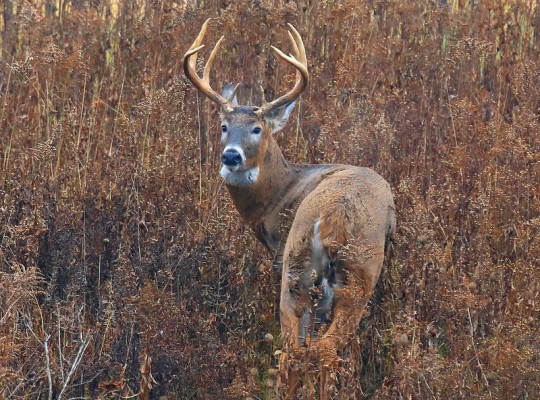
A white-tailed deer buck (Odocoileus virginianus) in Lake Meyer Park, Iowa, USA
by Larry Reis
#white tailed deer#deer#odocoileus virginianus#odocoileus#cervidae#artiodactyla#mammalia#chordata#wildlife: iowa#wildlife: usa#wildlife: north america
235 notes
·
View notes
Text
people joking about the big western states are empty and fake just makes no sense to me. they're some of the most interesting states in the union! geologically they're stunning, they have huge herds of charismatic wildlife, culturally they gave us cowboys and the Wild West and a lot of weird libertarian tendencies...
...to me the fake states are the flat ones. Kansas, Iowa, etc, but also Connecticut and Delaware. they have many millions of people but zero cultural impact or interesting sites, which is way more embarrassing than. I would say Rhode Island counts but I don't even think it can qualify as a state, it's more like a skin tag hanging off Connecticut
19 notes
·
View notes
Text

luna moth, Des Moines, iowa
0 notes
Text
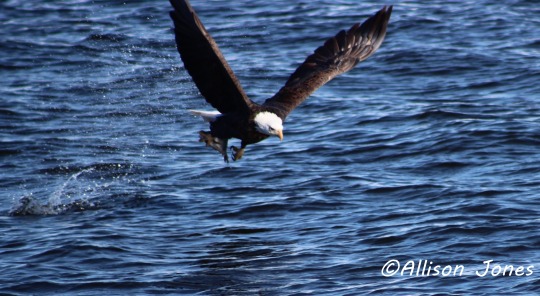
Bald Eagle on the Mississippi River in Iowa. Taken 2014
#nature#outdoors#my photography#nature photography#my art#beautiful photos#my photos#outdoor photography#photo#animal photography#animals#wildlifephotography#wildlife#wild life photography#bald eagle#wild animals#iowa#photographers of tumblr#photographers on tumblr
5 notes
·
View notes
Text

Limestone might not be the first thing one associates with a kiln. Perhaps clay pots, plates, and mugs come to mind more readily. Yet, lime kilns were important for converting limestone to powdered lime for making mortar and plaster in the 1800s. This kiln, with the interior (top left), entrance (bottom left), and a diagram of its dimensions (right) shown here, was dug into an Iowa hillside. It is a periodic kiln, which would have cycled with a firing time of 72 hours followed by 12 hours of cooling (Mansberger and Straton n.d.). The upper third of the kiln was constructed of cut limestone blocks, and the lower two-thirds were cut out of bedrock (boundary marked by red arrow). The limestone blocks were either dry-laid, or if mortar was used to cement them together, it has decayed. Historical sources point to the kiln’s operation prior to 1870 (Andreas 1873; United States Department of the Interior, Census 1870; United States Department of the Interior, Census 1880).
Andreas, A.T.
1873 Illustrated Historical Atlas of Des Moines County, Iowa. Andreas Publishing Co. Lakeside Building, Chicago, Illinois.
Mansberger, Floyd, and Christopher Straton
n.d. The Griggsville Landing Lime Kiln at Ray Norbut State Fish and Wildlife Area, Pike County, Illinois. Brochure based on a report prepared for the Illinois Department of Natural Resources.
United States Department of the Interior, Census Office
1870 Ninth Census of the United States. Washington, D.C., Government Printing Office.
1880 Tenth Census of the United States. Washington, D.C., Government Printing Office.
3 notes
·
View notes